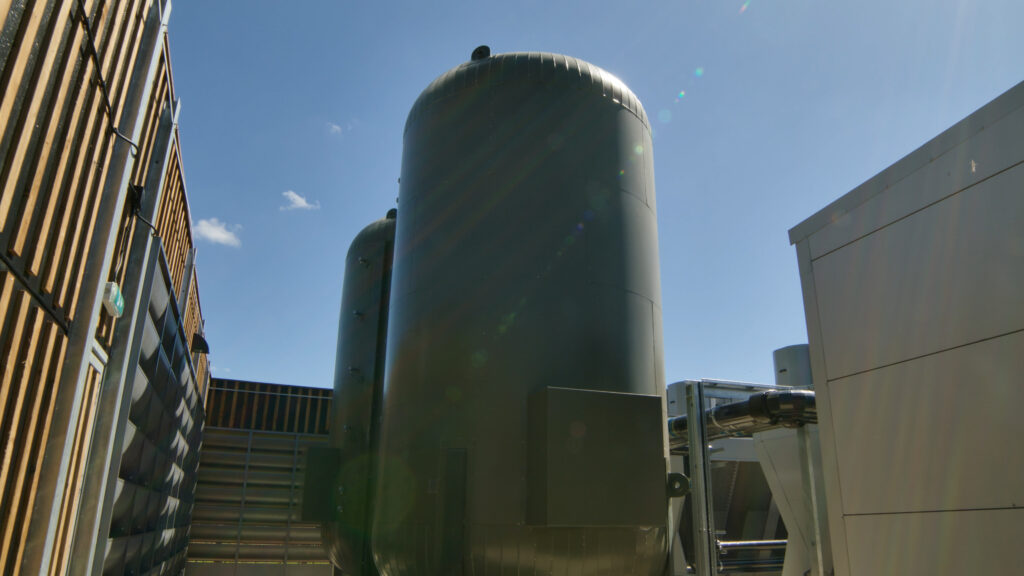The Importance of ‘Home-Grown’ Heat

Energy procurement, delivery and use across the UK has seen a seismic shift in recent years as we transition from carbonised to decarbonised systems in a bid to meet the country’s net zero goals.
While we absolutely celebrate what this means in terms of a greener and more sustainable energy future, we must understand some of the significant and interconnected challenges this brings. These challenges span economic, geopolitical, technological, and environmental dimensions.
Gas reliance
Gas boilers are being phased out but there is still a high reliance on natural gas. Despite the growing investment in renewables, gas remains the dominant heating fuel, although this is set to change thanks to new standards that will be coming into force.
This current reliance on gas in terms of energy procurement brings a whole host of challenges – mainly global market exposure and the price volatility that it brings. The UK imports a large portion of its gas and prices are tied to international markets, making it vulnerable to global supply shocks.
Individual air source heat pumps
Thanks to the rise of regulations like the Future Homes Standard, the transition from carbonised to decarbonised heat is well underway and is set to be mandated very soon. Individual air source heat pumps (ASHPs) are recognised widely as a key technology to aid this transition, but uptake remains below government targets due to high upfront costs, a limited installer base and lack of incentives.
Grid capacity
There are also limitations to the existing infrastructure, with grid constraints being a huge factor to consider. Individual ASHPs are electrified heat sources and a mass switch over to these solutions would require major upgrades to the electricity grid, which are both costly and timely.
The solution: heat networks
Heat networks are centralised systems that can generate heat for whole communities and then distribute it via a shared network of highly insulated pipes. Heat networks use tried and tested technology and are very common across Europe. In the UK they are typically installed for high-rise, high-density developments but in recent years a number of heat networks have been designed for low-rise, low-density housing developments – making them a Future Homes Standard-compliant solution that can be rolled out at pace and at scale across the country.
Networked Ground Source Heat Pumps work by extracting naturally occurring, stored thermal energy from the ground to provide consistent, energy-efficient heating.
The solution offers a clean alternative to gas through a ground source heat pump installed within each property, which is connected to a shared network of hidden underground pipes. The small, compact heat pump sits discreetly inside the home, saving valuable space and eliminating the need for any external kit.
Networked Ground Source Heat Pumps:
- Only need the same grid electricity capacity as homes heated by gas, removing the risk of grid capacity constraint
- Bring a complete end-to-end heating, hot water and cooling solution. This inclusion of passive cooling helps Part O Building Regulation compliance
- Meet Future Homes Standard, reducing carbon emissions by 75-80% from day one
- Offer up to five times the efficiency of gas and a 30% increased efficiency than an equivalent individual air source heat pump
- Will be regulated by OFGEM from 2026 offering homeowners the ultimate protection on price and service levels
In a bid to accelerate heat network role out, it is vital that that housebuilders and developers are offered choice. Networked Ground Source Heat Pumps are one option, Community Heat Hubs are another.
Community Heat Hubs use large scale air source heat pumps and thermal stores to produce hot water in the site central Heat Hub. Heat and hot water are delivered into homes through a site network of insulated pipes. Community Heat Hubs remove the need for individual air source heat pumps to be mounted outside every home and crucially they:
- Meet Future Homes Standard, reducing carbon emissions by 75-80% from day one
- Address grid capacity issues, using the thermal stores to flatten the site’s grid demand. This significantly lowers a site’s overall peak demand compared with individual heat pumps
- Lower cost for house builders and lower customer bills by up 20%, compared to individual air source heat pumps
- Will be regulated by OFGEM from 2026 offering homeowners the ultimate protection on price and service levels
Both heat network solutions rely on shared infrastructure and can scale to meet the heating demands of entire communities. They also offer a more efficient, centralised approach to energy generation and distribution compared to carbonised methods.
How do heat networks help with energy procurement?
Centralised heat is generated by networked heat pumps which use either air source or ground source heat. This means all energy is truly ‘home-grown’ and taken from what is naturally occurring around us – either from the air that we breathe or the heat that is generated in the ground beneath our feet.
One of the most compelling reasons heat networks are gaining traction in new build residential housing is their ability to dramatically reduce carbon emissions.
Heat networks benefit from higher efficiencies due to the stable and renewable nature of the energy sources they tap into. This centralised approach reduces transmission losses and ensures a more consistent and reliable heat supply across the network.
Heat networks, including Networked Ground Source Heat Pumps and Community Heat Hubs, are poised to play a pivotal role in the construction of low-carbon, energy-efficient new build residential homes.